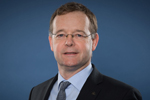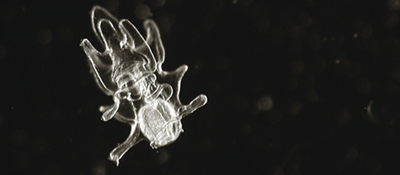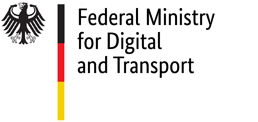BG Verkehr / Dienststelle Schiffssicherheit
Referat Maschine
Brandstwiete 1
20457 Hamburg

Holger Steinbock
Phone: +49 40 36137-217
Fax: +49 40 36137-204
Mail: maschine@bg-verkehr.de
Bundesamt für Seeschifffahrt und Hydrographie
Sachgebiet S 41
Bernhard-Nocht-Straße 78
20359 Hamburg
Katrin Ewert
Phone: +49 40 31 90 74 10
Fax: +49 40 31 90 5000
Mail: ballastwasser@bsh.de
Ballast water
- „Stowaways“ in ballast water
- Ballast Water Management Convention
- Exceptional rules for ballst water exchange in the Baltic and the North Sea
- Complying with the D-2 standard / ballast water management systems
„Stowaways“ in ballast water
Seagoing ships with little or no cargo on board usually fill seawater into special ballast tanks to lower their centre of gravity. Such ballasting improves the stability and thereby the safety of the ship. However, the ballast water also contains small aquatic organisms such as bacteria, algae and crustaceans. These „stowaways“ are crossing the oceans before being released in coastal waters all over the world where they may create hazards to the environment. Furthermore, they can cause economic damage e. g. by blocking industrial cooling systems.
Ballast Water Management Convention
Due to increasing problems with invasive alien species from ballast water of sea-going ships, the IMO developed the Ballast Water Management Convention (BWM Convention). It entered into force on 8th September 2017 and, essentially, it stipulates two standards. These have to be met in order for the ballast water to be deemed save in accordance with the Convention:
- D-1 standard and the
- D-2 standard (both documents in German only)
The D-1 standard is admissible for a transitional period and can be achieved by simple ballast water exchange. However, the stricter D-2 standard can only be achieved with an appropriate ballast water management system on board.
Moreover, IMO has developed several guidelines and circulars regarding the implementation of the Ballast Water Management Convention. We compiled these for you under "Documents / Environmental protection" under the heading "Ballast Water".
Implementation of the Ballast Water Management Convention in Germany
Germany joined the Ballast Water Management Convention on 13th February 2013 with the Ballast Water Act. Additional regulations to the Ballast Water Convention and in regard to infringement procedures were stipulated in the “See-Umweltverhaltensverordnung (SeeUmwVerhV)” (ordinance on maritime environmental performance).
Information on an exception from the obligation to conduct a ballast water exchange are given in the General ruling by the BSH and the FAQs on Environmental protection.
Further information regarding the implementation of the BWM-Convention in the North Sea and the Baltic Sea as well as practical examples are given in the information letter for the maritime shipping industry as well as in the FAQs on Environmental protection.
Required ship documents
Every ship to which the BWM Convention applies is required to carry the following ship documents on board:
- a Ballast Water Management Plan,
- an International Ballast Water Management Certificate (IBWM Certificate), and
- a Ballast Water Record Book containing any ballast water operations.
According to the Ballast Water Management Convention, merchant ships with a gross tonnage of 400 and over must have an International Ballast Water Management Certificate (IBWM Certificate). With this certificate, the respective flag state confirms that the management of the ballast water on board the ship complies with the requirements of the BWM Convention. The Ship Safety Division issues these certificates for the German flag.

Exceptional rules for ballst water exchange in the Baltic and the North Sea
For years the neighbouring states of the North Sea and the Baltic Sea have worked within the framework of HELCOM and OSPAR for a coordinated and effective implementation of the BWM Convention.
For the Baltic Sea, HELCOM developed a “Guide for alien species and ballast water management” to reduce the negative effects of alien species in the Baltic Sea area. The guide is directed in particular at ships that travel the Baltic Sea and offers an overview of the global and regional measures for ballast water management. Among other things, the guide presents three guidance documents about ballast water exchange. They were published by IMO as circulars (cf. BWM.2 Circ.14 (2008), BWM.2 Circ.22 (2009) and BWM.2 Circ.39 (2012)).
Even though, the application of the D-1 standard has become mandadory, the guidance documents still hold helpful information about ballast water exchange of ships on voyages in the Northeast Atlantic, the Baltic Sea and the Mediterranean Sea.
For the North Sea, the OSPAR states have designated an exchange area for intra North Sea traffic (see BWM.2/Circ.56 as well as a map of it).
- Ships traveling as intra North Sea traffic (and only these) are required to conduct an exchange in the designated exchange area of the North Sea if the exchange area is on their way. Ships are not obliged to divert from the planned travel route or to delay the travel to conduct a ballast water exchange. They might be required to conduct a partial exchange only.
- Intra North Sea traffic comprises all ships that operate within the North Sea only and take up or discharge ballast water in that area. This includes all rivers opening into the North Sea, as well as the Kiel Canal, which forms part of the river system Elbe. In each case, each section of the voyage has to be considered separately, i.e. even though a ship is heading for the Baltic Sea, it is considered as being intra North Sea traffic if it takes up or discharges ballast water in the North Sea/Kiel Canal.
- Ships from outside the North Sea shall not exchange their ballast water in the North Sea exchange areas but rather use the 200 nm distance from the nearest land, i.e. from the baseline and at least 200 m water depth on their way before entering the North Sea (or if this is impossible 50 nm distance from the nearest land, i.e. from the baseline/ 200 m water depth).
- The coordinates of the exchange area can be found in the annex to BWM.2/Circ.56.
If a ship is operated solely between specific ports or places, it is possible for the ship to be granted an exemption from the ballast water management, in accordance with A-4 of the BWM Convention. This is only possible, though, if, on the basis of port analyses and the appropriate risk assessment, a low risk for the environment, human health, property or resources is expected.
To this regard, HELCOM and OSPAR have developed the “Joint HELCOM/OSPAR Harmonised Procedure on the Granting of BWM Convention Exemptions”. It is based on IMO Guideline G-7 and stipulates an agreed procedure to grant exemptions for the Northeast Atlantic and the Baltic Sea in accordance with A-4 of the BWM Convention. The document is continually reviewed by HELCOM and OSPAR and is regularly updated in the course of new insights.
Complying with the D-2 standard / Ballast water management systems
Requirements for ships flying the German Flag
Please refer to the Public Announcement regarding requirements for ballast water management systems for ships flying the German Flag.
Approval
The Ballast Water Management Convention stipulates an approval of ballast water management systems (BWMS) by the Flag State whose ships are to be fitted with such systems. The Code for Approvals of Ballast Water Management Systems (BWMS Code) contains the details for the approval of BWMS; the Federal Maritime and Hydrographic Agency (BSH) issues a certificate of the type approval.
Ballast water management systems using active substances can only be approved, if the environmental and operational soundness of the active substance has been demonstrated. The Marine Environmental Protection Committee (MEPC) of the International Maritime Organization (IMO) approves active substances, supported by the expert group GESAMP (Group of Experts on the Scientific Aspects of Marine Environmental Protection). Approvals of systems using active substances are based on the Procedure for approval of ballast water management systems that make use of active substances (G9).
In Germany, the Federal Maritime and Hydrographic Agency (BSH) is responsible for the approval of BWMS. The BSH is supported by experts of the Federal institute for risk assessment, the German Environment Agency and the BG Verkehr.
By now a sufficient number of BWMS that are in complaince with the IMO standards are available on the market. Find out more about ballast water management systems and their approval.
Periods of grace
After the International BWM Convention entered into force, the IMO Maritime Environment Protection Committee (MEPC) clarified which ships require a BWMS and at which point in time.
Existing ships (not newbuildings)
There is a period of grace of two years for existing ships. This period of grace is linked to the renewal survey for the IOPP Certificate.
- In general, existing ships have to comply with the D-2 standard after 8 September 2019 from the the first renewal of the IOPP Certificate.
- If the IOPP Certificate had already been renewed between 8 September 2014 and 8 September 2017, a BWMS has to be installed (= latest opportunity for the following renewal of the IOPP Certificate).
- If the IOPP Certificate was renewed between 8 September 2017 and 8 September 2019, a BWMS has to be installed at the latest on 8 September 2024 (= latest opportunity for the subsequent second renewal).
Newbuildings
Newbuildings where the keel was layed on or after 8 September 2017 must have an approved BWMS on board and comply with the stricter D-2 standard from the onset.
Small ships
Ships with a size of less than 400 GT receive a period of grace till 8 September 2024 to comply with the D-2 standard.
Further information on the periods of grace is given in ISM Circular 02/2017 of 17 July 2017.


